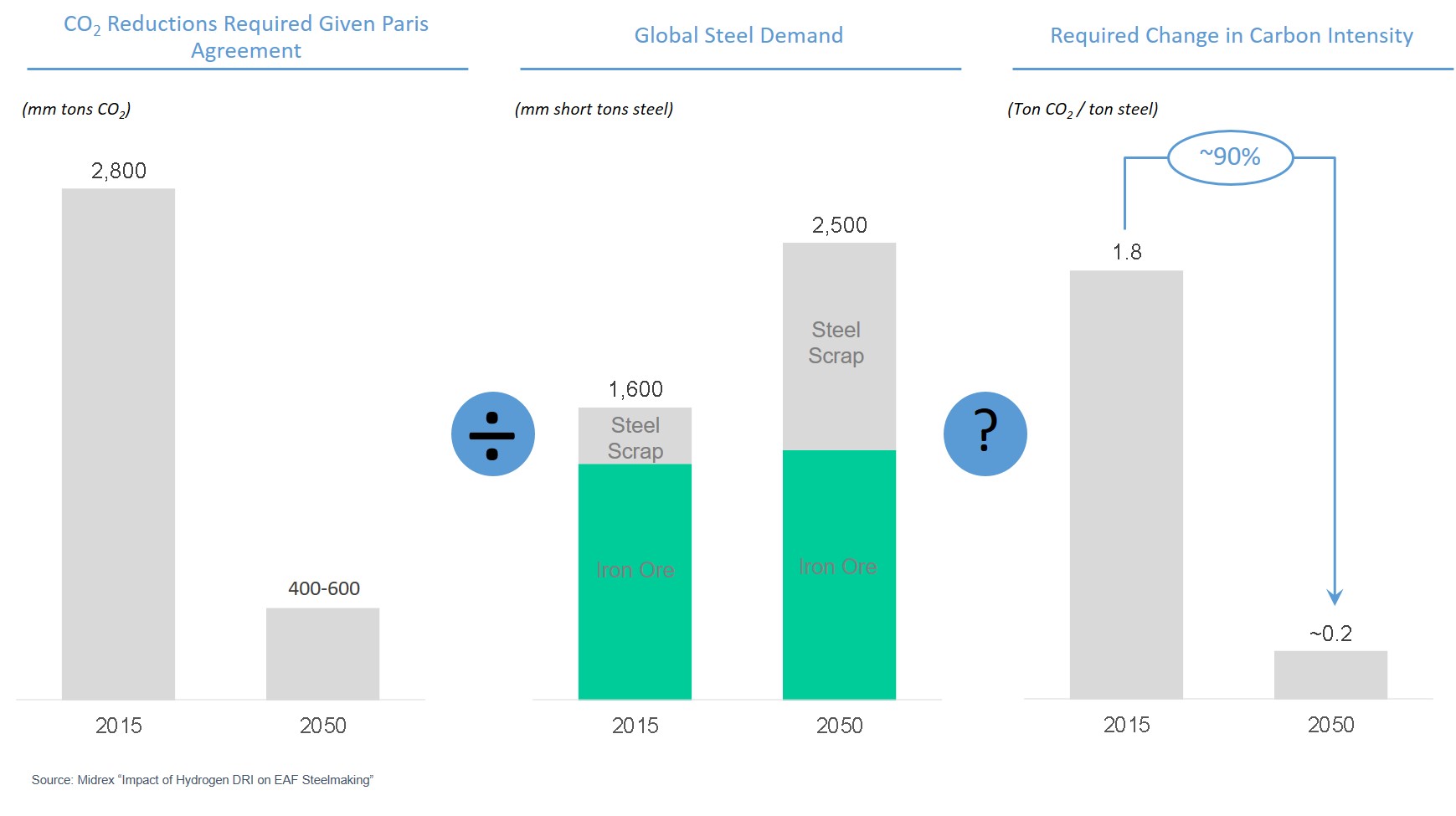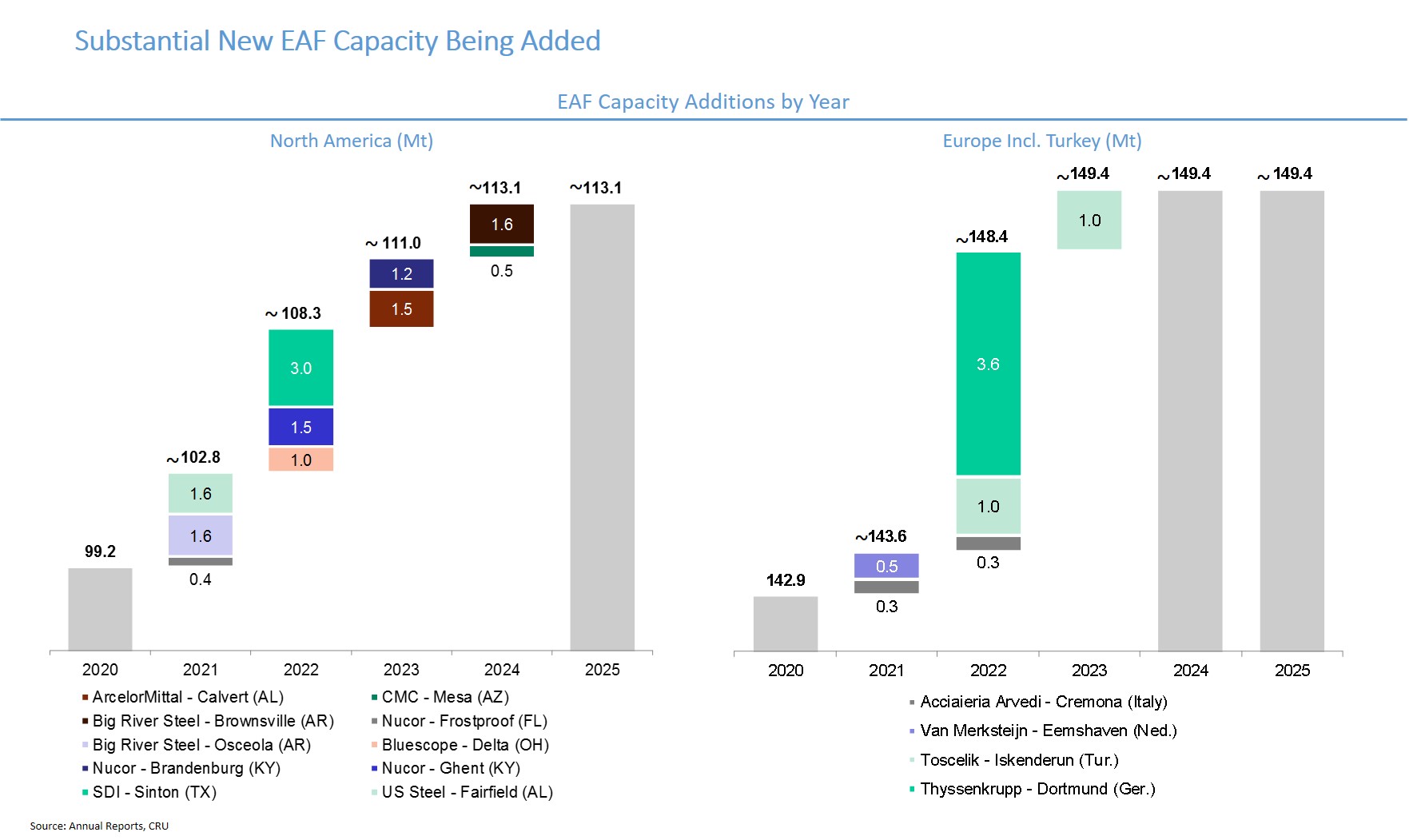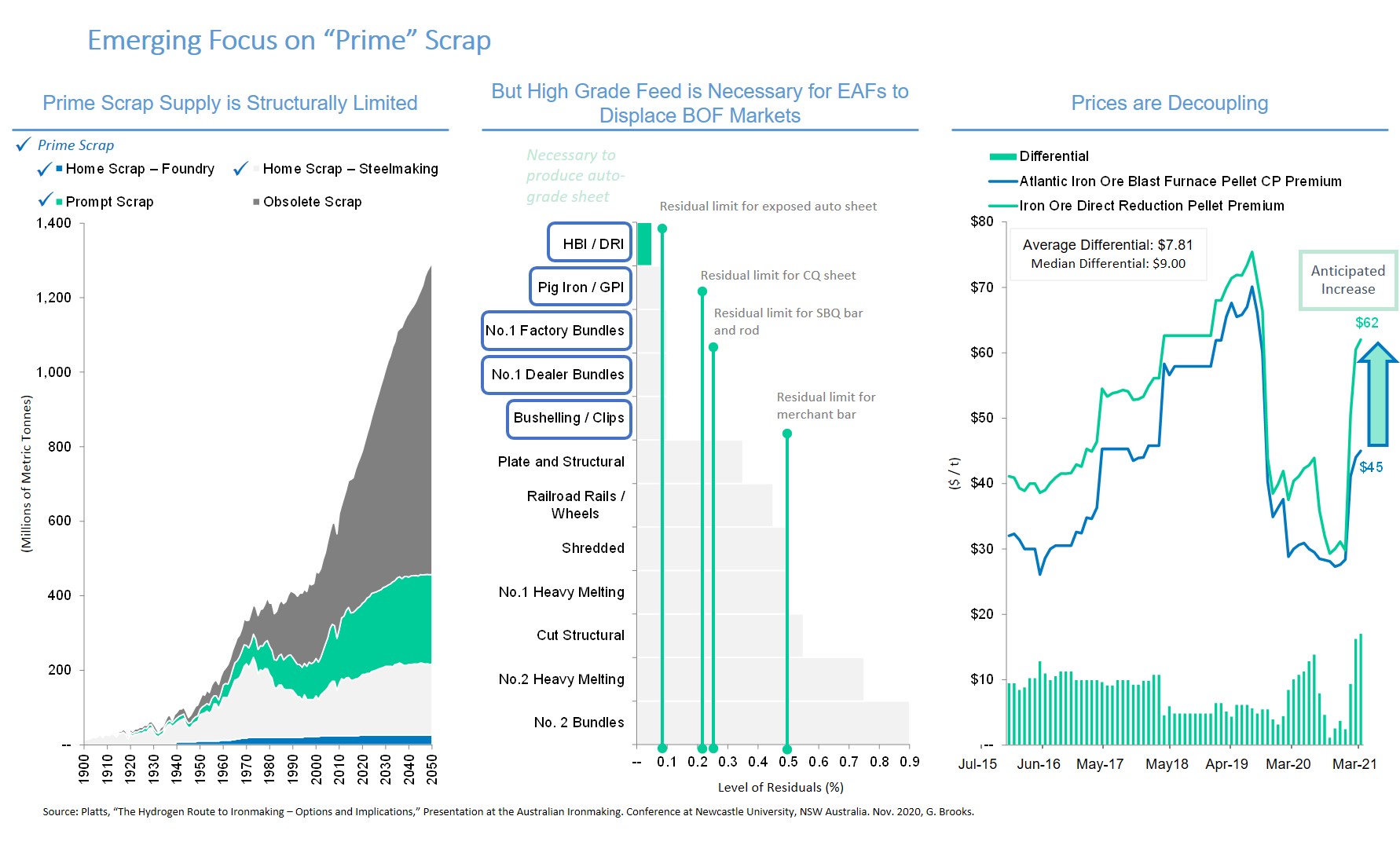Green Steel Focus
Global demand for “Green Steel” is on the rise. Steel manufacturers are transferring or building plants with Electric Arc Furnace (EAF). EAF reduces dependence on coal in the steel making process. This will lead to increased demand for Direct Reduction Iron (DRI) and Hot Briquetted Iron (HBI) pellets as an alternative to scrap. There is also a shift towards hydrogen and natural gas as a reduction agent from using coal.
How is Mesabi Metallics unique compared to other pellet producers on the Mesabi Range?
Mesabi is uniquely positioned to complete its already fully permitted DR pellet project producing 7 million tons per annum. DR Grade requires very high grade base resources with low levels of contaminants. Most of the Mesabi Range has been mined for decades, and high grade material is no longer available at most operations.
By contrast, Mesabi has not been mined for the past 35 years and the resource base is best suited to produce DR pellets. Few other domestic left capable of producing DR grade concentrate. Where other resources exist, the ore bodies are harder and more difficult to process.
Harder ore requires more grinding, which is the most expensive and power intensive component of iron ore mining, resulting in dramatically higher costs than those expected at Mesabi.
Sectoral Trends
Green Steel backdrop
Increasingly stringent environmental regulations and possible carbon tax implementation will be key factors impacting both the mining and steel industry. Implementation of regulatory standards in the steel industry has increased the demand for high quality raw materials such as iron ore pellets.
The shift towards “green steel” will drive EAF and DRI production, technologies that demand high purity metallic feed stocks. DRI production has witnessed significant growth in the recent years and DRI production capacities are expected to increase in the forthcoming period, driving demand for DR pellets.
There has also been a shift in the preference towards DRI over scrap metal in steel production. This growing global demand for pellets is occurring against the backdrop of lack of investment in new pelletizing capacity over the long-term and depletion of some of the currently producing mines.
The supply of iron ore pellets in the U.S. is projected to decline over the coming years, several major BF producers have begun shifting to EAFs.



